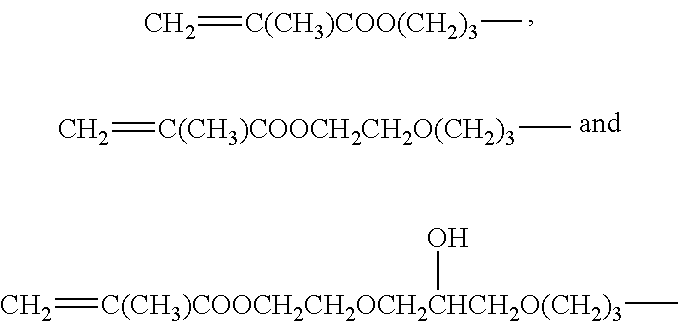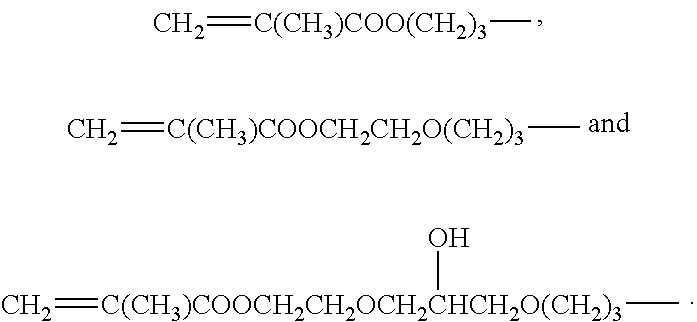Process for crosslinking thermoplastic polymers with silanes employing peroxide blends and the resulting crosslinked thermoplastic polymers
- Summary
- Abstract
- Description
- Claims
- Application Information
AI Technical Summary
Benefits of technology
Problems solved by technology
Method used
Image
Examples
example 1
100 parts by weight of an extrusion molding grade of polyethylene pellets having a melt index of 0.2 and density of 0.922 g / cm3 are coated by tumbling with 1.2 parts by weight of vinyltriethoxysilane having dissolved therein 2.5 parts by weight of 1,1 Di(tertbutylperoxy)-3,3,5-trimethylcyclohexane having a 0.1 hour half-life temperature of 128° C., 2.5 parts by weight of Di-tert-butyl peroxide having a 0.1 hour half-life temperature of 164° C. and 3 parts by weight of dibutyltin dilaureate condensation catalyst, until all of the liquid is taken up. The composition is then extruded in a single screw extruder under the following conditions: Temperature of screw: 60° C. Temperature of barrel zone 1: 170° C. Temperature of barrel zone 2: 220° C. Screw speed: 20 r.p.m.
The residence time of the polyethylene in the machine is approximately 1 to 2 minutes.
EXAMPLE 2
Composition:
Base polyethylene resin (Escorene LD 166 BA, with an MFL of 0.2 g / 10 min at 190° C. under a load of 2.16...
example 2
developed a die pressure of 279 bar and gave a very smooth surface finish to the extrudate. The tensile strength at break was 17.3 MPa, the elongation at break was of 392%, and the hot-set measured at 15 min at 200° C. under a load of 0.2 MPa was of 50% with a permanent set of 0%.
example 3
gave a smooth surface finish to the extrudate. The hot-set measured at 15 min at 200° C. under a load of 0.2 MPa was of 50%.
PUM
| Property | Measurement | Unit |
|---|---|---|
| Temperature | aaaaa | aaaaa |
| Temperature | aaaaa | aaaaa |
| Temperature | aaaaa | aaaaa |
Abstract
Description
Claims
Application Information
 Login to View More
Login to View More - R&D
- Intellectual Property
- Life Sciences
- Materials
- Tech Scout
- Unparalleled Data Quality
- Higher Quality Content
- 60% Fewer Hallucinations
Browse by: Latest US Patents, China's latest patents, Technical Efficacy Thesaurus, Application Domain, Technology Topic, Popular Technical Reports.
© 2025 PatSnap. All rights reserved.Legal|Privacy policy|Modern Slavery Act Transparency Statement|Sitemap|About US| Contact US: help@patsnap.com


